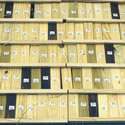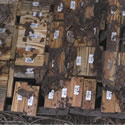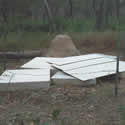Termite Ground Proximity Field Test Method
The ground proximity termite test method is a field test method for evaluating the relative susceptibility of wood test samples to attack and damage by termites when used in Use Category UC1 Interior Dry and UC2 Interior Damp exposures. It is designed to expose wood test specimens to a severe challenge by termites in a field exposure.
Test specimens may include preservative treated wood, modified wood, or any system of interest for resistance to termite damage, with effectiveness evaluated relative to reference preservative treatments and untreated wood. Variations in test layouts are acceptable, within defined requirements, to compensate for variations in test location, native termite species, and climate, with valid results produced as long as the untreated material in the test arrays are adequately attacked over the duration of the exposure. In some instances, additional feeder material may be helpful in encouraging termite attack. Experience has shown that the method works better in shaded location rather than in full sun exposure, especially in hot climates, presumably as temperatures can get hotter than is optimal for certain species of termites.
Caution should be used with this method and diffusible preservative systems, as high humidity and moisture fluctuations in some exposure locations and arrangements may result in excessive preservative depletion during this test (into adjacent untreated wood, and/or the foundation material).
A standardized version of this method is available as AWPA Standard E26.
A conceptually similar test method, but with the samples further removed from the ground, can be found in AWPA Standard E21.
Images
References


